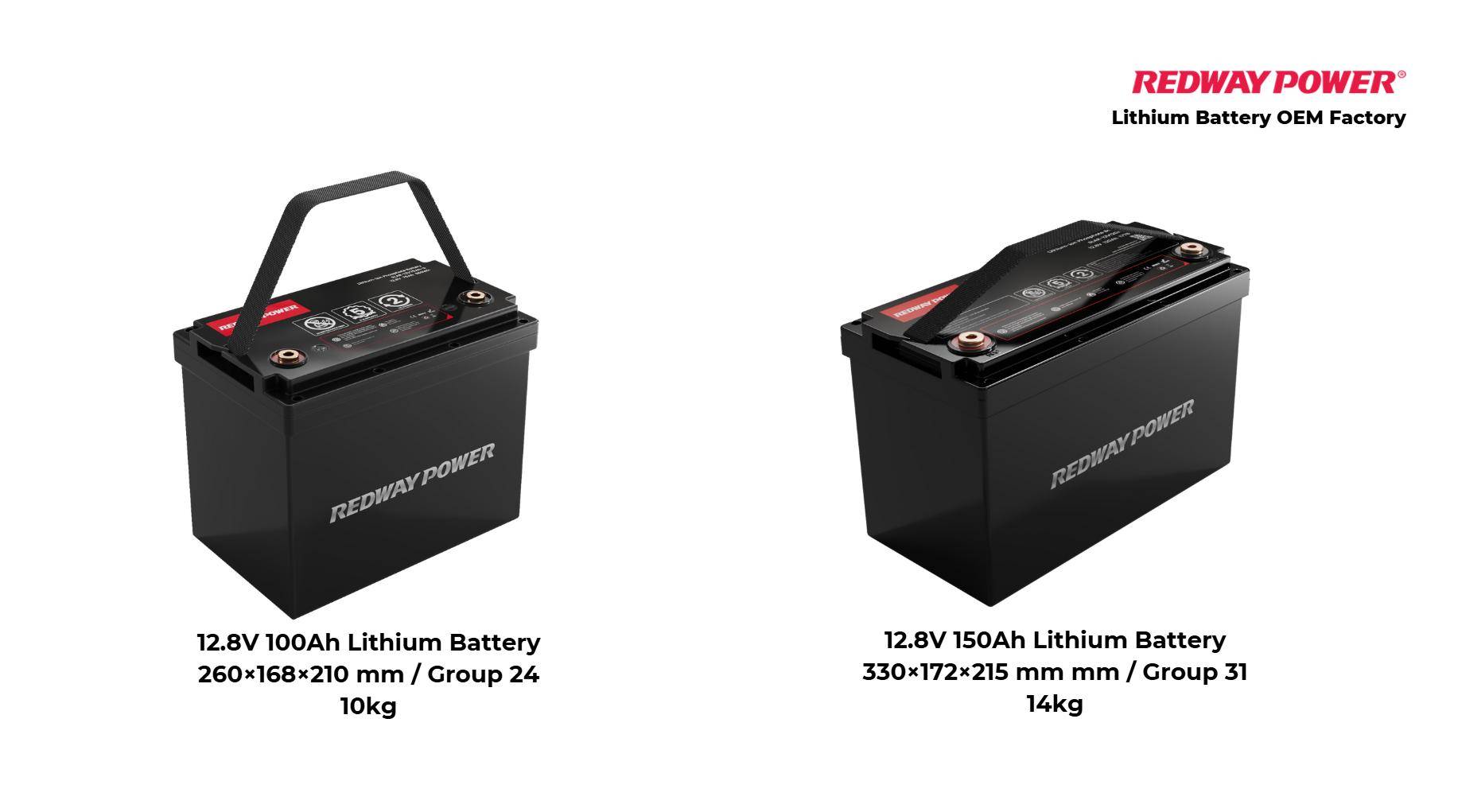- Forklift Lithium Battery
-
48V
- 48V 210Ah
- 48V 300Ah
- 48V 420Ah (949 x 349 x 569 mm)
- 48V 420Ah (950 x 421 x 450 mm)
- 48V 456Ah
- 48V 460Ah (830 x 630 x 590 mm)
- 48V 460Ah (950 x 421 x 450 mm)
- 48V 460Ah (800 x 630 x 600 mm)
- 48V 460Ah (820 x 660 x 470 mm)
- 48V 500Ah
- 48V 560Ah (810 x 630 x 600 mm)
- 48V 560Ah (950 x 592 x 450 mm)
- 48V 600Ah
- 48V 630Ah
-
48V
- Lithium Golf Cart Battery
- 12V Lithium Battery
12V 150Ah Lithium RV Battery
Bluetooth App | BCI Group 31
LiFePO4 Lithium
Discharge Temperature -20°C ~ 65°C
Fast Charger 14.6V 50A
Solar MPPT Charging - 24V Lithium Battery
- 36V Lithium Battery
- 48V Lithium Battery
-
48V LiFePO4 Battery
- 48V 50Ah
- 48V 50Ah (for Golf Carts)
- 48V 60Ah (8D)
- 48V 100Ah (8D)
- 48V 100Ah
- 48V 100Ah (Discharge 100A for Golf Carts)
- 48V 100Ah (Discharge 150A for Golf Carts)
- 48V 100Ah (Discharge 200A for Golf Carts)
- 48V 150Ah (for Golf Carts)
- 48V 160Ah (Discharge 100A for Golf Carts)
- 48V 160Ah (Discharge 160A for Golf Carts)
-
48V LiFePO4 Battery
- 60V Lithium Battery
-
60V LiFePO4 Battery
- 60V 20Ah
- 60V 30Ah
- 60V 50Ah
- 60V 50Ah (Small Size / Side Terminal)
- 60V 100Ah (for Electric Motocycle, Electric Scooter, LSV, AGV)
- 60V 100Ah (for Forklift, AGV, Electric Scooter, Sweeper)
- 60V 150Ah (E-Motocycle / E-Scooter / E-Tricycle / Tour LSV)
- 60V 200Ah (for Forklift, AGV, Electric Scooter, Sweeper)
-
60V LiFePO4 Battery
- 72V~96V Lithium Battery
- Rack-mounted Lithium Battery
- E-Bike Battery
- All-in-One Home-ESS
- Wall-mount Battery ESS
-
Home-ESS Lithium Battery PowerWall
- 24V 100Ah 2.4kWh PW24100-S PowerWall
- 48V 50Ah 2.4kWh PW4850-S PowerWall
- 48V 50Ah 2.56kWh PW5150-S PowerWall
- 48V 100Ah 5.12kWh PW51100-F PowerWall (IP65)
- 48V 100Ah 5.12kWh PW51100-S PowerWall
- 48V 100Ah 5.12kWh PW51100-H PowerWall
- 48V 200Ah 10kWh PW51200-H PowerWall
- 48V 300Ah 15kWh PW51300-H PowerWall
PowerWall 51.2V 100Ah LiFePO4 Lithium Battery
Highly popular in Asia and Eastern Europe.
CE Certification | Home-ESS -
Home-ESS Lithium Battery PowerWall
- Portable Power Stations
What Maintenance Is Required for a 12V Lithium Battery in Off-Grid Systems?

Maintaining a 12V lithium battery in off-grid systems is relatively simple due to their low maintenance requirements. However, following specific practices can significantly enhance their performance and longevity. Below, we outline essential maintenance steps for optimal battery care.
1. Regular Monitoring
Battery Management System (BMS): Most lithium batteries come equipped with a BMS that monitors critical parameters such as voltage, temperature, and state of charge (SOC). Regularly check the BMS readings to ensure that all parameters remain within safe limits. This system protects the battery from conditions like overcharging and deep discharging, which can lead to cell damage.
State of Charge: Monitor the SOC frequently. Ideally, keep the battery charged between 20% and 80%. Maintaining this range is crucial for extending the battery’s lifespan.
2. Proper Charging Practices
Use Compatible Chargers: Always utilize chargers specifically designed for lithium batteries, ensuring they adhere to the correct charging profile (e.g., absorption voltage set to 14.2-14.4V). Using the right charger maximizes charging efficiency and battery health.
Avoid Full Discharges: It’s essential to avoid discharging lithium batteries below 20% capacity. Frequent deep discharges can drastically reduce their lifespan and overall performance.
3. Temperature Management
Operating Conditions: Ensure the battery operates within the recommended temperature range. Charging below 0°C (32°F) should be avoided, as it can harm the battery’s cells and lead to decreased performance.
Storage Conditions: If you plan to store the battery for an extended period, maintain a partial charge of around 50% and keep it in a cool, dry location. This prevents degradation and ensures the battery remains functional when needed.
4. Physical Inspection
Check Connections: Periodically inspect the battery terminals and connections for signs of corrosion or looseness. These issues can adversely affect performance and efficiency.
Visual Inspection: Conduct regular visual checks for any signs of physical damage, such as swelling or cracks in the battery casing. Any abnormalities could indicate internal issues that need addressing.
5. Avoid Equalization Charges
Unlike lead-acid batteries, lithium batteries do not require equalization charges. Enabling this feature on lithium batteries can cause damage due to high voltage pulses, potentially compromising battery health.
6. Periodic Performance Testing
Conduct full discharge tests periodically to assess the battery’s performance. This testing helps ensure that the battery meets your energy needs and allows for early identification of potential issues.
Conclusion
While 12V lithium batteries require less maintenance than their lead-acid counterparts, adhering to these practices—such as regular monitoring, proper charging, temperature management, and physical inspections—will help maximize their efficiency and lifespan in off-grid systems. By implementing these strategies, you can ensure your battery remains reliable and functional for all your power needs.













